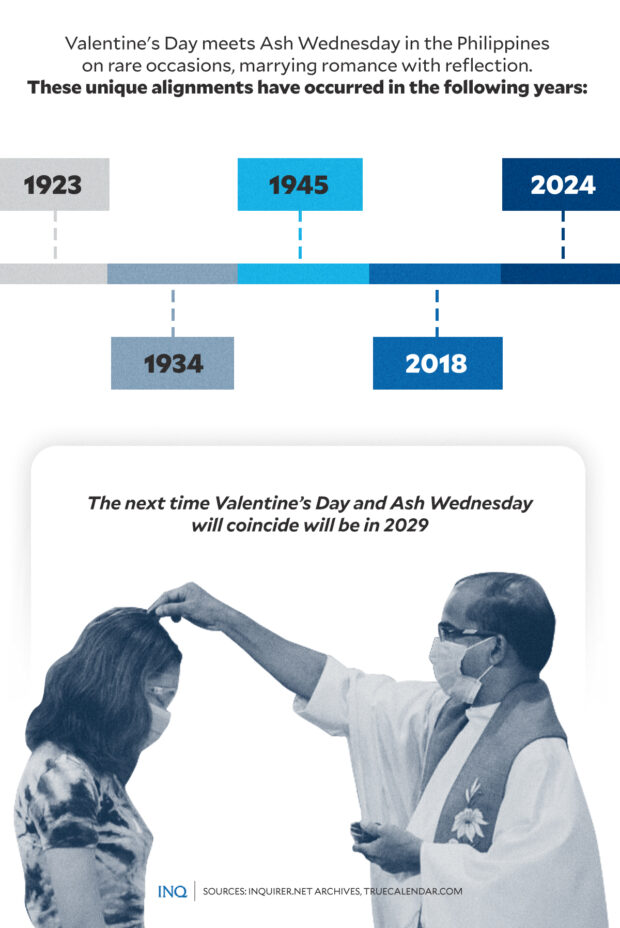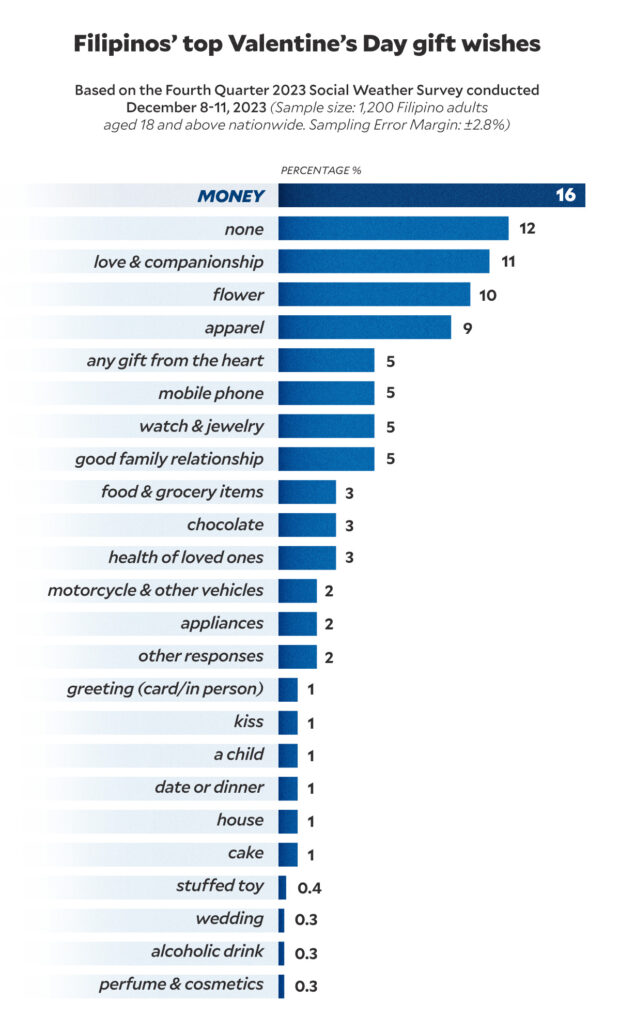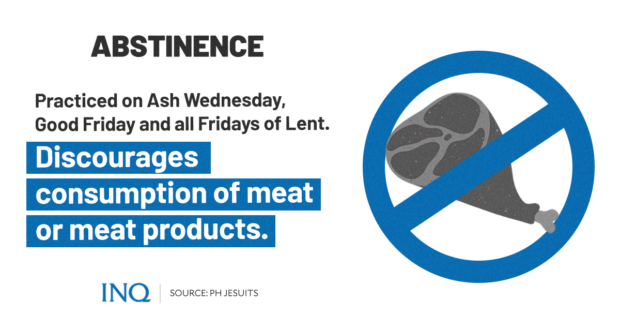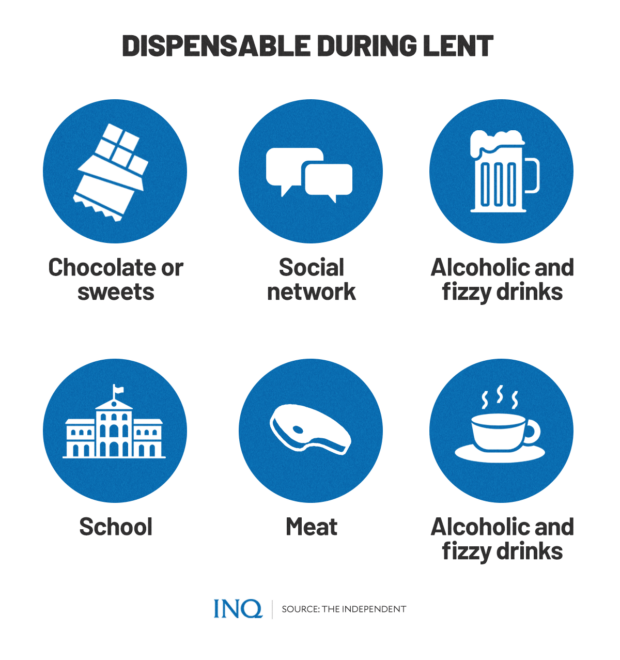Valentine’s Day meets Ash Wednesday: Navigating love amid penance
MANILA, Philippines — Globally, February 14 shines as a day for love and all its myths and facts, but for many Catholics this year, it also marks a time for reflection and penance as Valentine’s Day and Ash Wednesday fell on the same day.
The coincidence of a time of love and the start of Lent is not common.
Six years have passed since these two significant observances last shared the same date. The year 2018 was notable, marking the first occasion in 73 years that Ash Wednesday and Valentine’s Day aligned.
However, when Valentine’s Day and Ash Wednesday converge, an intriguing irony emerges between the materialistic fervor of love and the austere reflection of Lent.
On the one hand, February 14 is awash with the commerce of romance—flowers, chocolates, and grand gestures fueling a trade boom. On the other, Ash Wednesday ushers in a period of fasting, prayer, and penance, calling for modesty and introspection.
This juxtaposition paints a vivid picture of contrast: the consumerist celebration of affection against a backdrop of spiritual simplicity, highlighting the complex interplay of secular indulgence and religious observance on the same calendar day.
In this piece, INQUIRER.net explores the vague history and commercial facets of Valentine’s Day, alongside the practices of penance like fasting and abstinence observed on Ash Wednesday, highlighting what the Catholic faithful are called to reflect upon during the confluence of these events.
An origin that is ‘vague at best’
Valentine’s Day has always been a special day, although most of its history remains shrouded in mystery. However, historians have previously found that the modern romantic notion attached to the celebration hardly shares a resemblance to how it was celebrated centuries ago.
Historical accounts said that the earliest possible origin of Valentine’s Day was the pagan holiday Lupercalia—an ancient Roman festival of fertility. The feast, however, was far more brutal than the concept of romance and love that we now associate with the date Feb. 14.
According to Encyclopedia Britannica, the Roman festival was held in mid-February, with some accounts stating that the celebration spans from Feb. 13 to 15.
As part of the celebration, Roman priests would sacrifice goats for fertility and dogs for purification. The hides of the slain goats were then believed to have been used to slap both women and crop fields — a ritual believed to make women fertile.
History.com also recounts a legend where the festival included a fertility rite that involved pairing young women with men through a matchmaking lottery, with young men drawing the names of their female counterparts from a large jar.
By the end of the 5th century, Pope Gelasius I replaced the pagan Lupercalia festival with a day dedicated to Saint Valentine’s martyrdom on February 14.
Despite Saint Valentine being celebrated as the “patron of lovers” and a symbol of romance, Pope Gelasius I’s intention was not to start a celebration of love and passion — a point highlighted by some contemporary scholars who caution Christians against marking the day due to its pagan origins.
However, much about Valentine’s Day was based on competing origin stories. Encyclopedia Britannica noted that the holiday’s true origin is “vague at best.”
“Valentine’s Day did not come to be celebrated as a day of romance until about the 14th century,” Encyclopedia Britannica stated.
A commercial holiday
To add to its vague origins, different historical accounts also have variations on when exactly Valentine’s Day became a commercial holiday.
READ: Valentine’s Day: The costs of love
According to Encyclopedia Britannica, Valentine, in the form of formal messages, first appeared in the 1500s, and commercially printed cards dedicated to the holiday were being used as early as the 1700s.
Encyclopedia Britannica likewise noted that the first commercial Valentine’s Day cards in the United States were printed in the mid-1800s.
National Geographic said that the ever-popular tradition of giving Valentine’s Day cards began in 1415 when the Duke of Orléans sent a card — said to be the very first Valentine’s Day card — to his wife while he was imprisoned in the infamous Tower of London.
“In the United States, Valentine’s Day cards didn’t gain popularity until the Revolutionary War, when people took up the habit of writing handwritten notes to their sweethearts,” National Geographic said, referring to the war between Britain and the United States.
“It was only in the early 1900s that cards were mass-produced for the holiday,” it added.
Fasting and abstinence
Ash Wednesday signifies the beginning of Lent, a 40-day journey of penance and contemplation culminating in Easter, which the Catholic faithful hold as the day Jesus Christ rose from the dead.
Doing penance, described by Philippine Jesuits as an “act of mortification,” is a crucial part of Lent for many Catholics. Starting on Ash Wednesday, Catholics are called to observe the two principal forms of Lenten penance: fasting and abstinence, accompanied by prayer.
Fasting, as defined by the Catholic News Agency (CNA), is the “act of doing with less.” Catholics between 18 and 59 years old should fast on Ash Wednesday and Good Friday.
“The law of fasting prescribes that only one full meal a day is taken. Two lighter meals are permitted to maintain strength according to each one’s needs. Eating between meals is not permitted, but liquids, including milk and fruit juices, are allowed,” said the Philippine Jesuits.
Abstinence refers to the act of “doing without.” The practice is commonly observed on Ash Wednesday, Good Friday, and on all Fridays during the 40-day Lenten Season.
READ: Penance at Lent: What can people give up?
“The law of abstinence forbids the eating of meat, but eggs, milk products, and condiments made from meat may be eaten. Fish and all cold-blooded animals may be eaten, for example, frogs, clams, turtles, etc.,” the Philippine Jesuits said.
“The law of abstinence binds those who have completed their fourteenth year and older. One is not bound on the fourteenth birthday, but begins to abstain at midnight at the close of the birthday.”
There are some individuals who are exempted from these practices, including senior citizens, pregnant or nursing women, those below 14 years old, the very sick, those who are materially poor and homeless, and laborers who have to work more than nine hours a day.
READ: FAQs: Fasting and abstinence during Lent
Aside from cutting meals and staying away from certain food, Catholics who practice penance in the form of abstinence can also give up other things for Lent.
For example, an article by the British online newspaper The Independent noted that among the most common things being given up for Lent by X (formerly Twitter) users — based on survey responses (both serious and non-serious) tracked by the website openbible.info — include certain vices like alcohol, swearing, and sugary drinks.
Penance on Valentine’s Day?
Valentine’s Day has long been associated with material expressions of love, including chocolates, jewelry, flowers, greeting cards, and various gifts, as well as dining experiences ranging from elegant restaurant meals to intimate homemade dinners for two.
In fact, a recently released survey by the Social Weather Stations (SWS) revealed that money, love and companionship, and flowers ranked high among the top Valentine’s Day “gift wishes” selected by respondents across the country.
READ: More than half of Filipinos ‘very happy’ with love life
Other gift wishes include apparel, mobile phones, watches, jewelry, food and grocery items, chocolate, motorcycles and other vehicles, appliances, houses, cake, stuffed toys, alcoholic drinks, and perfume or cosmetics.
Yet, with fasting embodying the principle of embracing simplicity and abstinence advocating for forgoing pleasures, the question arises: how can devout Catholics celebrate Valentine’s Day without compromising their Lenten commitments?
According to Rev. Fr. Douglas Badong of the Nuestra Señora de la Soledad de Manila Parish, Catholics are not forbidden to celebrate or go out on dates on Valentine’s Day.
“Along with the celebration of Valentine’s Day is the celebration of Ash Wednesday. The Church does not prohibit celebrating on this day. It’s also okay to go on a date,” Badong said in Filipino in an interview with INQUIRER.net.
Nevertheless, he urged Catholics to prioritize Ash Wednesday through participation in Mass and the receiving of ashes on their foreheads.
“Do not forget that we have fasting and abstinence,” he said, adding that “eating meat is prohibited.”
For some Catholics who are inclined to forego certain Valentine’s Day activities to give more importance to Ash Wednesday, Fr. Badong recommended going on simpler dates or choosing to celebrate Valentine’s Day either on Feb. 13th or on a subsequent date like Feb. 15th.
In an interview, Catholic Bishops’ Conference of the Philippines (CBCP) assistant secretary general Fr. Bryand Restituto reminded Catholics that “Ash Wednesday is a day of obligation” and “a day of fasting and abstinence.”
A reminder of what ‘true love’ is
“Valentine’s Day and Ash Wednesday remind us of the true meaning of love. To love is to be willing to sacrifice. Ready to offer one’s life,” said Fr. Badong in Filipino.
He added that everyone participating in Ash Wednesday rites should consider what they can do or give up on this day as a sign of their sacrifice.
“Whatever they can save, for example, from not buying alcohol or cigarettes, this can be what they offer to those in need,” he added.
When asked about the significance of the imposition of ashes, Fr. Badong explained that it is a sign of repentance or asking for forgiveness.
“Man is from dust. We have nothing to boast about, especially before God. To dust, we shall return,” he said.
“We are entering 40 days of preparation to once again remember how much God loves us,” he added.





















